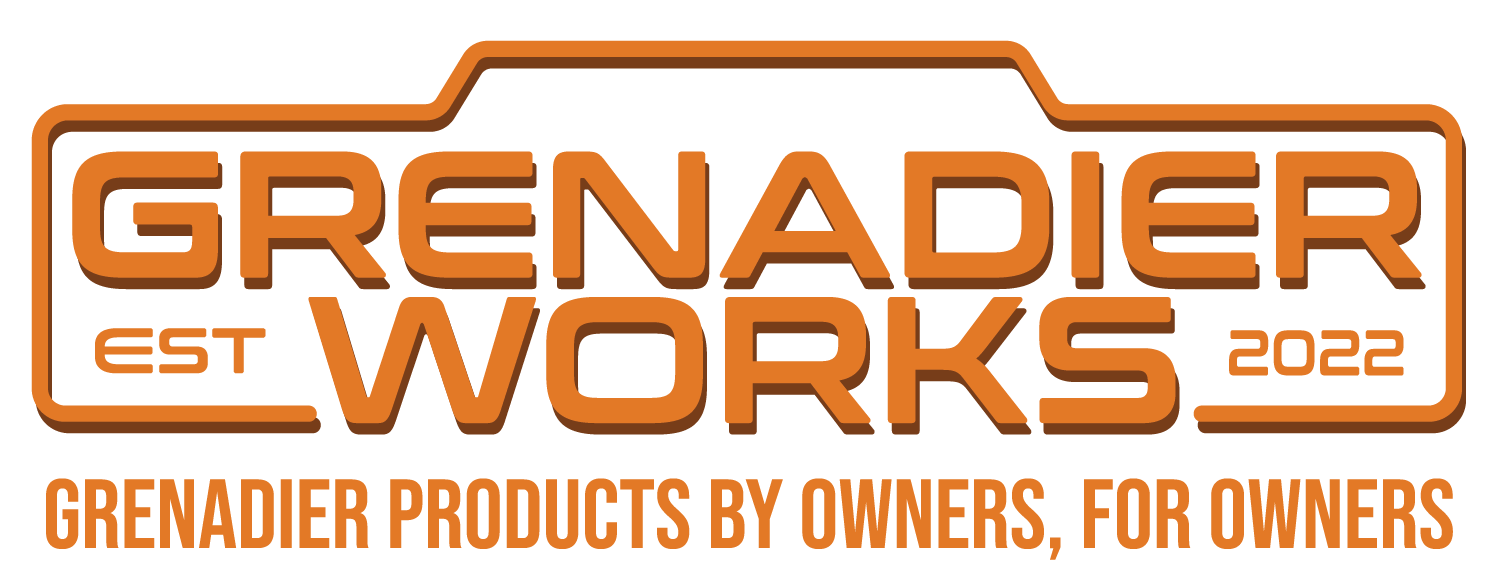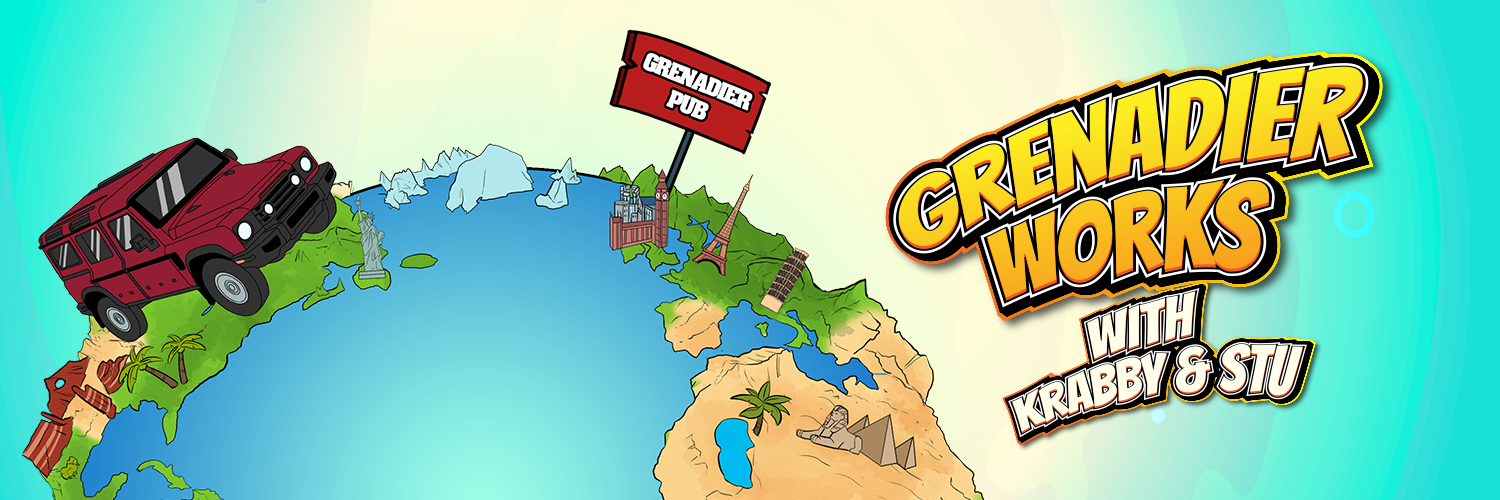2,5 bar, same as I use, but I don't have much load.Re pressures. I'm 36 all round all year. I find works ok in the soft stuff if a little warm on the black.
The Grenadier Forum
Register a free account today to become a member! Once signed in, you'll be able to contribute to the community by adding your own topics, posts, and connect with other members through your own private inbox! INEOS Agents, Dealers or Commercial vendors please use the contact us link at the bottom of the page.
-
Guest submit your best shot for a chance to win the December Photo Contest. Photo Contest Click Here
You are using an out of date browser. It may not display this or other websites correctly.
You should upgrade or use an alternative browser.
You should upgrade or use an alternative browser.
Tyre pressure warning
- Thread starter mfeuerer
- Start date
Why not just edit the TPMS setting. Once you do that, they never go off again unless punctured.I'm highly likely to just remove the TPMS sensors next time I change tires and just put all sensors under the rear seat. It's just not programmed well and more of a nuisance. I've driven all this time without ever having TPMS and I have only seen it as a negative so far with the Grenadier.
Once I got mine setup I haven't heard a peep out of it for about a year... only if I have lowered the pressures deliberately has it pinged. Then I just reset it.
Sadly this is not true. When you go from a hot day to a cool night the pressure difference can cause a warning. Often when first starting out early in the AM. The range is just too small for the massive differences you see on these trucks. Plus it's not uncommon to get false warnings. I keep my tires at almost exactly the same PSI and even if they display the same it seems a .5psi difference can trigger a warning. Or the system is just broken. If you could set individual high and low that would be great, but your stuck living in the 3-4 psi range based on the temp and pressure you initially set them at.Why not just edit the TPMS setting. Once you do that, they never go off again unless punctured.
My guess is the sensors didn't turn on since they are not recognizing tire rotation. Might require a deeper bypass.I tried this, unfortunately did not work. I also ried locating them in each corner of the vehicle, again did not work. I had to fit them in the tyres themselves. Maybe I was just unlucky.
Re pressures. I'm 36 all round all year. I find works ok in the soft stuff if a little warm on the black.
This is why its better to run higher pressures, the differences are less and so you don't get a warning.. In France in summer year before last i was getting over pressure warning due to the heat, I just increased the pressure first thing in the morning and then reset the TPMS. It was fine after that.Sadly this is not true. When you go from a hot day to a cool night the pressure difference can cause a warning. Often when first starting out early in the AM. The range is just too small for the massive differences you see on these trucks. Plus it's not uncommon to get false warnings. I keep my tires at almost exactly the same PSI and even if they display the same it seems a .5psi difference can trigger a warning. Or the system is just broken. If you could set individual high and low that would be great, but your stuck living in the 3-4 psi range based on the temp and pressure you initially set them at.
I cannot really generally recommend this.This is why its better to run higher pressures,
Had my Duelers at 3 bar (empty vehicle) and an can definitely say that this is dangerous on wet roads! After one very unpleasant experience I'm running 2.5 bar when empty and max. 2.8 bar in the back when fully loaded. _Much_ better safety margin in wet conditions!
Since my dealer said the BFGs are even worse than the Duelers on wet roads, I would not exceed the recommended 2.5 bar on wet roads any more.
You shouldn't just arbitrarily run higher pressure. That causes excess wear in the middle of the tire. You should be running pressure based on manufacturer's suggested rolling radius (Not easily found with some tires) or chalk test.This is why its better to run higher pressures, the differences are less and so you don't get a warning.. In France in summer year before last i was getting over pressure warning due to the heat, I just increased the pressure first thing in the morning and then reset the TPMS. It was fine after that.
Don’t run higher pressure, set the TPMS at a higher than cold pressure! This mitigates the alarms and you still set at your desired cold pressure.
- Local time
- 4:11 PM
- Joined
- Sep 25, 2021
- Messages
- 522
But, if the TPMS reference point is set too far above the (correct) cold tire pressure, you may then get a “Too Low” Warning, yes?Don’t run higher pressure, set the TPMS at a higher than cold pressure! This mitigates the alarms and you still set at your desired cold pressure.
Have no issues with mine....I run 36 in all four. WEnt in today and saw where you can do a COLD TIRE PRESSURE reset.... No issues with the monitors themselves. I would do a cold tire inflation to your intended pressure...before sun gets on tires even. Then go into SETTINGS and under Tyre Pressure...do a RESET and see if that helps.
I run a higher pressure because the thing weighs over 3 ton! Not just to silence the TPMS. I have done 45000 miles on the same set of BFG AT's and theres no uneven wear.You shouldn't just arbitrarily run higher pressure. That causes excess wear in the middle of the tire. You should be running pressure based on manufacturer's suggested rolling radius (Not easily found with some tires) or chalk test.
My point is that you need to run higher pressures on a heavier vehicle. My Unimog runs at 80psi IIRC. You only go back down in pressure if you have floatation tyres, so my tractors run at around 35...
That's not the way you phrased it. You suggested "just run higher pressure".I run a higher pressure because the thing weighs over 3 ton! Not just to silence the TPMS. I have done 45000 miles on the same set of BFG AT's and theres no uneven wear.
My point is that you need to run higher pressures on a heavier vehicle. My Unimog runs at 80psi IIRC. You only go back down in pressure if you have floatation tyres, so my tractors run at around 35...
FYI, non of my Unimogs run more than about 35-45psi. My U1300L is set per rolling radius method on 46" Goodyear MVT's.
Certainly if your running heavy or have a camper then pressures go up. But not arbitrarily just to reduce TPMS warnings.
My mog grosses out at 14 ton.That's not the way you phrased it. You suggested "just run higher pressure".
FYI, non of my Unimogs run more than about 35-45psi. My U1300L is set per rolling radius method on 46" Goodyear MVT's.
Certainly if your running heavy or have a camper then pressures go up. But not arbitrarily just to reduce TPMS warnings.
I think I dated her once...My mog grosses out at 14 ton.
actually maybe twice
Last edited:
They can certainly do that, my biggest mog is 6.25 ton though. I don't do the Overland Camper thing. Nor do I use mine for municipal duty. Thus I have to run lower pressures. I would be a fool to run the pressures you are running on my big Mog. So, running higher pressures on my Grenadier just to stabilize the TPMS system doesn't make sense. If I get a larger pressure swing then it just is what it is, unfortunately Ineos didn't factor that in well enough like many other things they seem to not do well.My mog grosses out at 14 ton.
At this point I assume we are in agreement and you just misspoke earlier or assumed I was running a fully laden Grenadier.
I agree that the margin of error in the TPMS should be wider..They can certainly do that, my biggest mog is 6.25 ton. Thus I have to run lower pressures. I would be a fool to run the pressures you are running on my big Mog. So, running higher pressures on my Grenadier just to stabilize the TPMS system doesn't make sense. If I get a larger pressure swing then it just is what it is, unfortunately Ineos didn't factor that in well enough like many other things they seem to not do well.
At this point I assume we are in agreement and you just misspoke earlier or assumed I was running a fully laden Grenadier.
I e had similar experiences at Agricultural College but I choose not to rememberI think I dated her once...
actually maybe twice
Yes, but more likely to heat up mover the temp limit.But, if the TPMS reference point is set too far above the (correct) cold tire pressure, you may then get a “Too Low” Warning, yes?
Went in for service at the dealer and it included tire rotations. No issues or alerts on the 27 mile drive home. Car set for a week while I was out of town. Came back and 'bing' tire warning. Front tire was high. Looked on the tire status screen and one front tire was at 49 and the other at 50psi and the rears at 46. So I figure what happened is the tire rotation was front to back on the same side and the dealer didn't adjust tire pressure. BUT the TPS must still work and know the former 'supposed to be' 49psi rear tires are now on the front where 49+psi is too high. Haven't made time to readjust the pressure and my ride quality is suffering. Probably this weekend I will do. I think it would have been better service for the dealer to do and I'll remember next time. Interesting that it took 24+ hours for the PSI to register the fault.
Similar threads
- Replies
- 2
- Views
- 177
- Replies
- 14
- Views
- 544
- Replies
- 3
- Views
- 395



